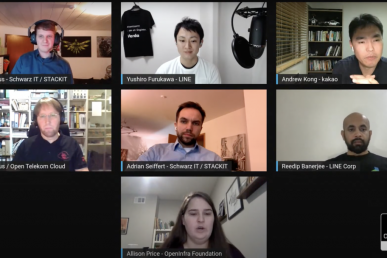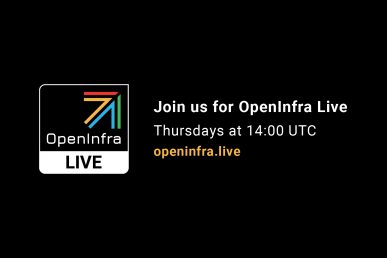Eleven years into the development and adoption of OpenStack, organizations with clouds of all sizes are continuing to grow their footprint and diversify the workloads they are running. In this series of case studies, we talked to different users around the world, learned about the scale and growth of their OpenStack cloud, and what kind of future growth they are expecting.
Today, Adrian Seiffert, senior professional, and Marvin Titus from Schwarz IT presented their OpenInfra use case and explained why their OpenStack deployment is growing so quickly.
What is the name of your organization?
Schwarz IT
What year did your organization launch its first OpenStack
2019
How has OpenStack transformed your organization?
By using OpenStack, STACKIT has started the internal transformation of the Schwarz IT to a cloud service provider. Enabling internal colleagues to order servers, storage and network configurations in a self-service and API-based way dramatically increased our speed. This is also covered by the high speed of resource provisioning which is now in the range of seconds instead of weeks.
What workloads are you running on OpenStack?
Our OpenStack environment is used mostly by higher level services. We are running two large Cloud Foundry environments on top of it, as well as hundreds of Kubernetes clusters. Additionally, we provide multiple databases for our users. From a business perspective, we are running services for the almost 13,000 Stores of Kaufland and Lidl (our retail brands) on top of OpenStack. In addition, the logistics of PreZero, our recycling company, are running here.
What is the scale of your OpenStack environment?
We started into the year 2021 with 180 compute nodes used by 5,000 virtual machines. Until now we have close to 300 compute nodes and our virtual machines have increased by 20%. On these nodes we provide 7,000 CPU Cores of different generations and around 140 TB of RAM. Our users transfer around 150 TB per month to and from OpenStack. Our environment is stretched over three separate data centers with dedicated fiber lines between them, which are utilized by our customers to transfer up to 11 PB of data per month.
Why has your organization seen such significant growth over the last year?
With the coronavirus pandemic, our retail brands Kaufland and Lidl grew enormously. This resulted in us growing accordingly. Additionally, we have determined that most of our current internal workload should run on STACKIT within the next 5 years. This means a large amount of growth for us that will continue in the coming years (and beyond), including OpenStack.
What is next for your OpenStack deployment? Are you expecting similar growth of the upcoming years?
We are currently managing our OpenStack environment using a tool provided by an external service provider. As we want to improve the quality of our product and get greater independence from external service providers, we decided to switch to our own OpenStack Lifecycle Management (LCM) solution named Yaook. Yaook is an LCM solution based on Kubernetes and based on the Kubernetes Operator Pattern. It is available under the Apache-2 License from the link above.
To make our environment more resilient to issues, we will also add additional OpenStack clusters to our disaster recovery datacenter. With that we can add options for our users to keep their workload running in (the) case of larger topics. We also expect that the growth described above will continue or even speed up.
- Inside Open Infrastructure: April 2024 - April 3, 2024
- Inside Open Infrastructure: January 2024 - January 18, 2024
- Inside Open Infrastructure: October 2023 PTG Recap - November 15, 2023

)









